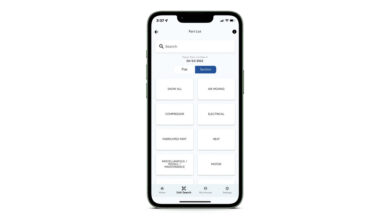ASHRAE Hosts 1st ‘Tech Hour’ on Optimizing Occupant Health in Indoor Environments
ASHRAE has launched its first ever Tech Hour video. ASHRAE Tech Hour provides relevant technical content in the form of one-hour videos to members and interested individuals through the ASHRAE 365 app.
“ASHRAE Tech Hour offers easily accessible content to professionals at all levels, presented by some of ASHRAE’s brightest minds,” said 2019-20 ASHRAE President Darryl K. Boyce, P.Eng. “We are excited to present our first video and anticipate this digital training format will be a welcomed resource for sharing pertinent building-related topics.”
On Nov. 19, ASHRAE premiered Tech Hour #1: Optimize Occupant Health, Building Energy Performance and Revenue through Indoor-Air Hydration. This video, presented by Stephanie Taylor, M.D., M. Arch. and CEO of Taylor Healthcare Inc., examines the powerful influence of indoor air and humidification on humans and actionable steps to improve health, productivity and learning.
The video provides a history of human health and shelters, new building assessment tools, data on occupant health and myths about humidity, mold and energy.
Viewer learning points include:
- Impacts of humidity on occupant health, the microbiome of the built environment and the transmission of germs
- Understanding of the relationships between water in the liquid and vapor state and the human body
- How humidity levels affect the infectivity of viruses and bacteria
- Technical information on the application of energy-saving and hygienic approaches to active humidification when supplementation is necessary as an intervention for dry air
- Cost-benefit analysis of occupant health as a building performance metric for building owners
- Information on ASHRAE discussions regarding best practices for indoor humidification levels for occupied buildings
During the first 30 days after the video’s launch, one PDH will be available to viewers through a registration form link in ASHRAE 365. Following the launch of the first video, ASHRAE plans to launch additional new videos on a quarterly basis.
To view ASHRAE Tech Hour videos, download ASHRAE 365 on the App Store or Google Play. For more information on ASHRAE Tech Hour, visit ashrae.org/techhour.



